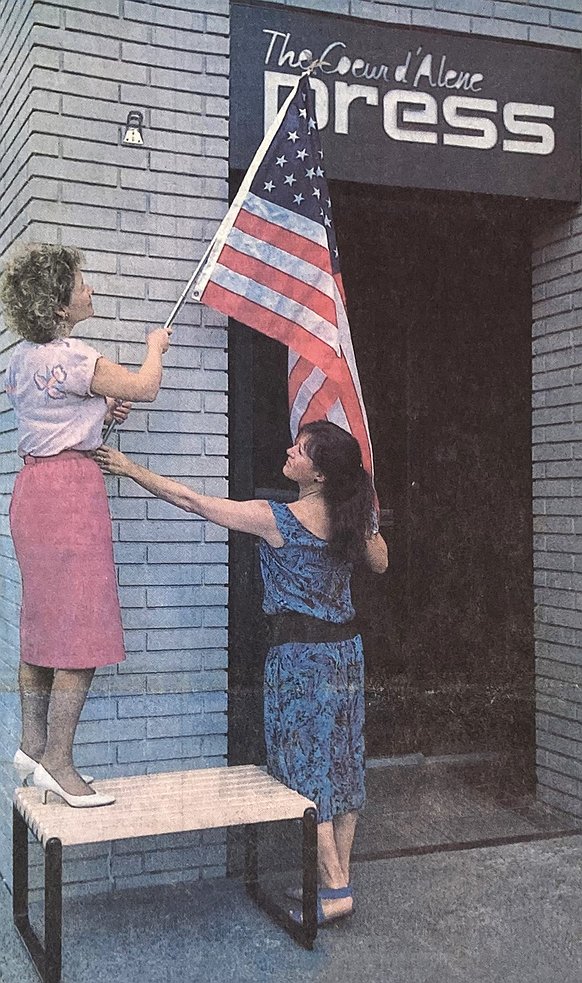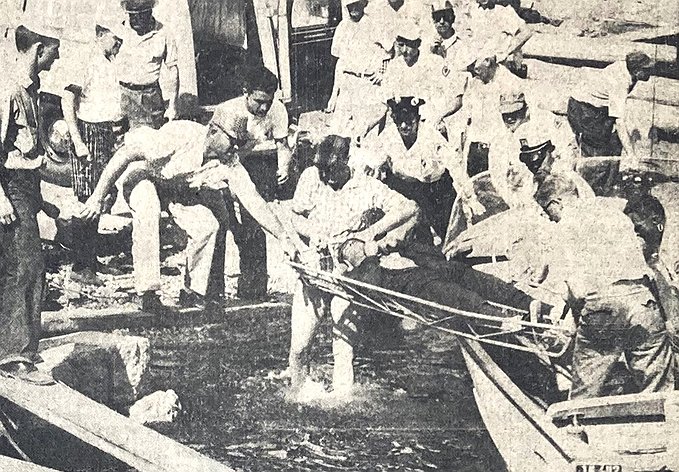HUCKLEBERRIES: Lucky from day one
The first lottery ticket sold in Kootenai County wasn’t a winner.
But Duane Hagadone didn’t care.
“This means the odds are better for everyone else,” the Coeur d’Alene businessman joked after scratching his $1 lottery ticket July 19, 1989.
With fanfare in all 44 counties, Idaho began its lottery with a stockpile of 8 million tickets and long lines of customers eager to try their luck at $3.5 million in prize money.
Idaho Lottery officials and local business leaders were giddy after several false starts.
“This is the day we’ve all been waiting for,” said lottery spokeswoman Kathy Showers to initiate Kootenai County’s kickoff ceremony at The Coeur d’Alene Resort. Similar events were taking place simultaneously around the state, according to the Coeur d’Alene Press.
In Boise, Gov. Cecil Andrus sold the very first $1 ticket in Idaho to industrialist J.R. Simplot.
Speakers at the Coeur d’Alene event addressed the struggle to legalize the lottery.
Mike Blackbird, of Coeur d’Alene, the state senator who wrote the 1988 legislation creating the lottery, spotlighted the late Vern Lannen, of Pinehurst. Lannen, who was killed in a 1986 logging accident, was the state senator who first stumped for an Idaho lottery.
Lannen, said Blackbird, lamented as he watched the state of Washington spend $34 million in lottery proceeds on education while Idaho failed to adopt one of its own.
The Legislature rejected lottery bills three times before Idahoans took matters into their own hands. An initiative to create a lottery won voter approval in 28 of Idaho’s 35 legislative districts. The goal of spending lottery dollars to boost education spending was a selling point.
In Coeur d’Alene that July day, vendors struggled to keep up with demand.
At Gittel’s Grocery, Sherri Gittel reported to The Press that her store had sold 550 tickets by 5 p.m. And she planned to reorder tickets the next day. Hico Gas of Hayden sold 100 tickets in the first 40 minutes. 7-Eleven on Best Avenue sold 200 tickets in less than three hours.
Meanwhile, community leader Hagadone, who bought 100 tickets “to take back to the office,” called the lottery another important cog in Idaho’s overall economic upswing.
Said he: “Our organization has supported it from day one.”
Grand old town
On this day in 1989, led by this newspaper and KVNI-AM radio, Coeur d’Alene residents flew their flags to protest a U.S. Supreme Court decision. A month before, the court had decreed that flag burning was a protected form of political dissent under the First Amendment.
Fumed a Press editorial: “It is naïve to accept the fact that freedom of speech in this country is an absolute freedom and that the First Amendment must stand untouched.”
The editorial’s call for a citywide protest July 21, 1989, was met with resolve in this red, white, and blue town, especially downtown.
At the old Wiggett’s Antique Mall, proprietor William Gagnon hung a flag, 4 by 8 feet, over the main window. Manager Dave Bobbitt of West One Bank OK’d the placement of flags on both sides of the automated teller. Bruce Winters of Sherman Avenue Hallmark moved his entire stock of flags, 11 by 16 inches, to the front window.
And The Press received letters of support from President George H.W. Bush and Idaho Gov. Cecil Andrus, who said he was “shocked and dismayed” by the court action.
At the time, 48 of 50 states banned flag desecration.
Later, in 1989, Congress passed the Flag Desecration Act, making flag burning a federal offense. But the Supreme Court struck the new law down as unconstitutional. And the ruling remains the law of the land to this day.
Ride 'em, Dixie
In mid-July 1984, Coeur d’Alene councilwoman Dixie Reid was willing to ride either an elephant or a donkey to defend her city’s honor.
Seems Hayden mayor Frank Canale had challenged Dixie to a race on circus elephants during his city’s Founders Days celebration. And Dixie gamely had accepted, brandishing a riding crop as she arrived at the starting line in a floppy hat and culottes.
However, she and her rival city official called off the race because the hot day had tired their giant pachyderms.
Dixie’s competitive juices were still bubbling at a council meeting three days later when fellow councilor Bob Brown suggested that the two elected officials race on donkeys.
The Hayden mayor was willing to try again on one condition — that Dixie supply the donkeys.
After all, he quipped, he had furnished the elephants.
Huckleberries
• Poet’s Corner: The hot dog is a lurid meat/comprised of eye balls, snouts and feet/and nameless organs pink and pasty —/yet even so I find it tasty — The Bard of Sherman Avenue (“The Curse of Oscar Mayer”).
• Vehicle Built for Two: Amidee Keven Walden was 97 and the oldest licensed driver in Idaho when Ron Hotchkiss gave him a ride in a car just as old: Ron’s 1907 Maxwell. It was July 2004. And “Ace,” a longtime banker who would live six more years, and Ron, a retired local cop, drove for hours. Afterward, Ace was sore. Said he: “The car is in better condition.”
• In Memoriam: Ray Flaherty, a pro football pioneer who invented the screen pass and two-platoon system, died here 30 years ago (July 19, 1994) at age 90. A longtime Hayden Lake resident, he played on two NFL championship teams and coached the Washington Redskins to two other titles (1937 and 1942), securing his place in the Pro Football Hall of Fame.
• In the Beginning: On July 18,1969, Pat Flammia helped judge 70-plus paintings for the second Coeur d’Alene Outdoor Arts & Crafts Festival at McEuen Field. He and wife Sue had formed the Citizens Council for the Arts to produce the two-day event. In 1970, the council moved the festival to North Idaho College and later changed its name to — Art on the Green.
• World Peace: Peace Pilgrim had walked 25,000 miles in 21 years by the time she reached Coeur d’Alene 50 years ago (July 18, 1974). And she planned to keep walking until our warring world embraced peace. She didn’t recall her age or original name. And didn’t mind being homeless and penniless. And she believed peace was possible in her time. We can only imagine.
• Big Weekend: The second Diamond Cup races, July 18-19, 1959, proved that hydro racing isn’t for sissies. Three drivers were injured, including Jack Regas of 1958 national champion Miss Bardahl. Regas suffered skull and rib fractures — and was taken from the Lake Coeur d’Alene course unconscious. Most of the 100,000-plus orderly spectators for the two-day event saw the crash.
Parting shot
The annual North Idaho College Summer School of Piping is long gone. And there was at least one Fort Grounds resident from July 1984 who would applaud its demise. The school provided two weeks of daily bagpipe music from 8 a.m. until 4 p.m. on the NIC campus. Pipers of all ages and skills came from the U.S. and Canada to learn. One Canadian bagpiper said 40 years ago that the school put Coeur d’Alene on the map internationally. But, in 1984, the constant music, particularly from the beginners, caused a neighborhood Grinch to snap. According to The Press, he used a “pipe of a different type” to damage an area where the pipers congregated. Said Don Phillips, then head of NIC security: “He (had) a low tolerance for bagpipe music.” Perhaps music, like art, is up to the beholder, too.
• • •
You can contact D.F. (Dave) Oliveria at dfo.northidaho@gmail.com.

















